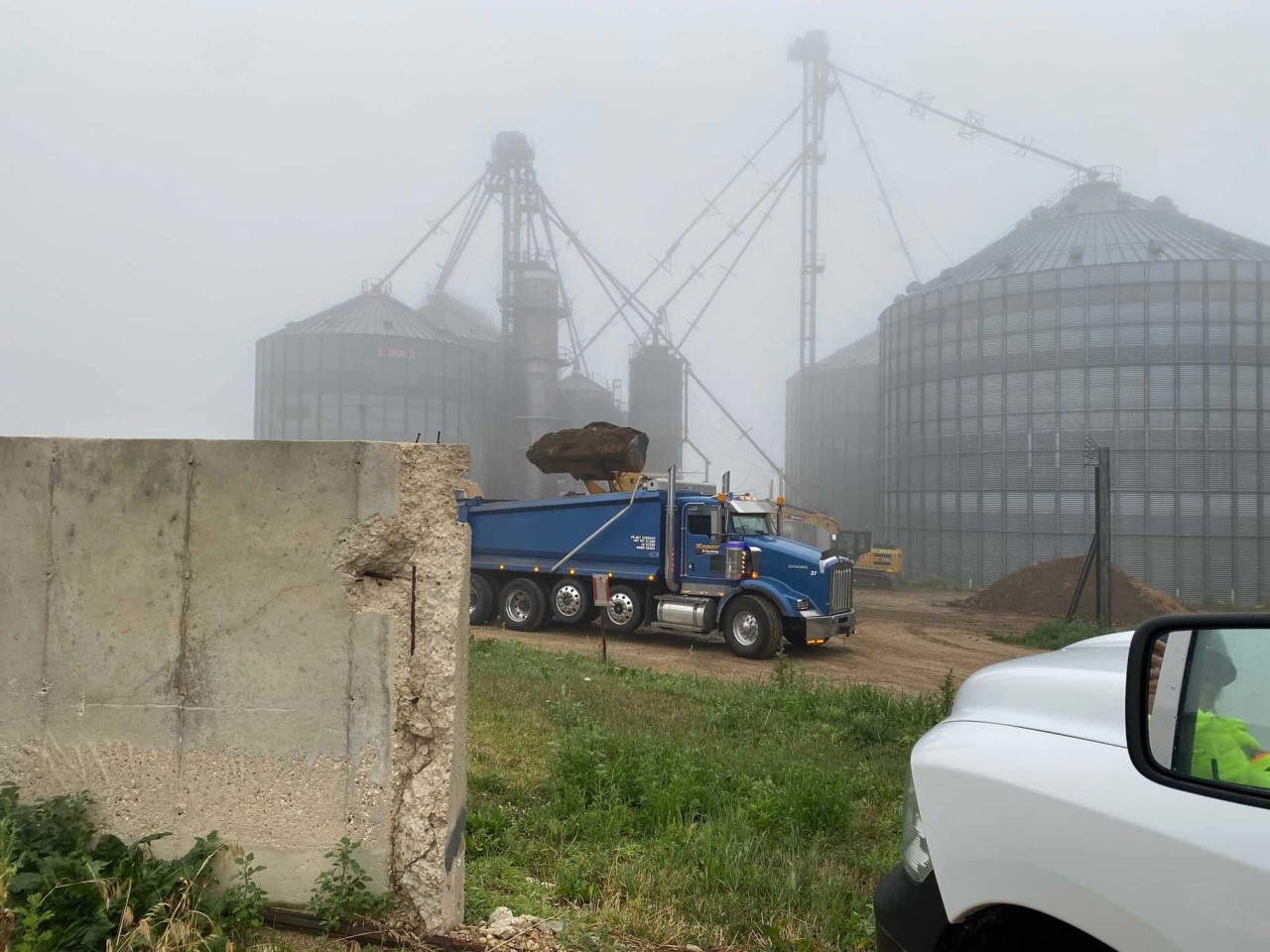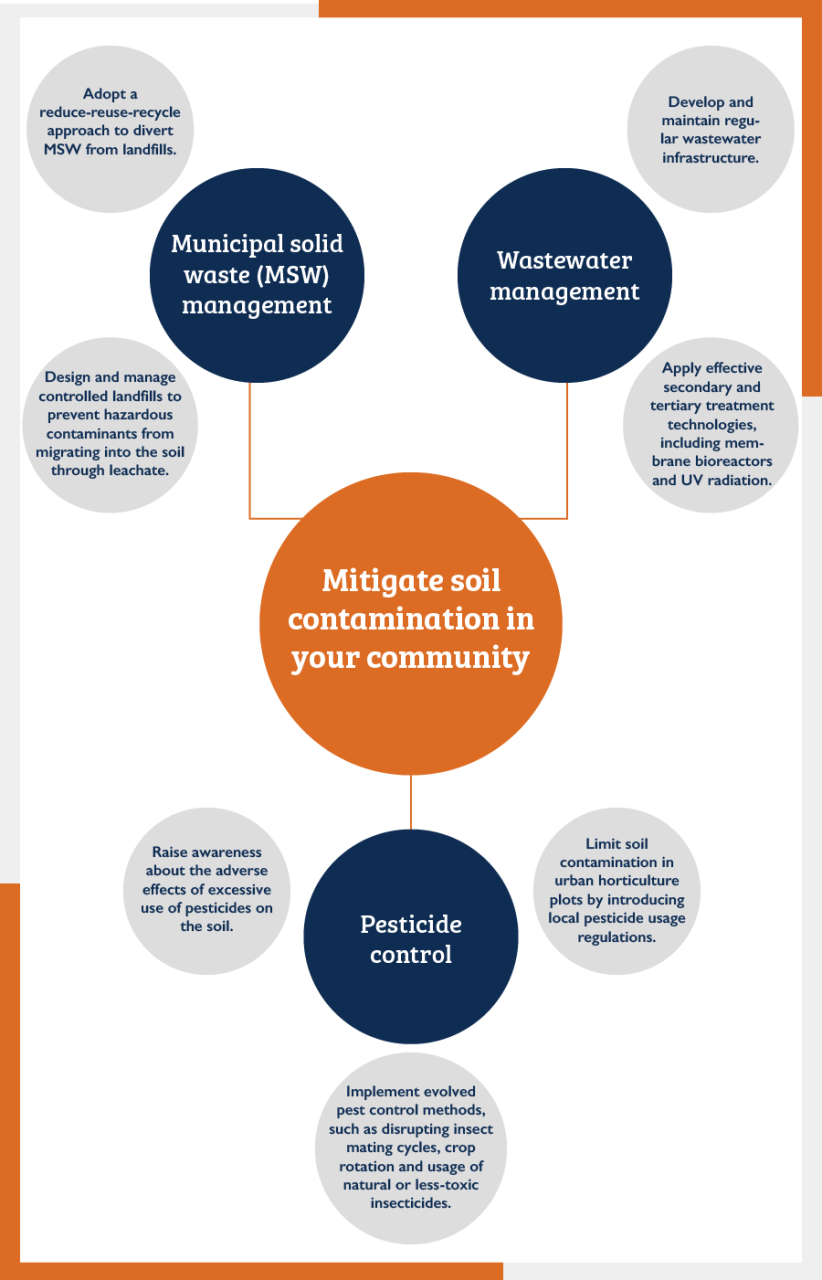Implementing soil contamination control measures in urban areas
How polluted is the ground beneath your feet? Lead and arsenic can occur naturally in soil — but there's no need to panic. There are measures that your community can take to control soil contamination in your area.
Soil contamination in urban areas is mostly attributed to human activities, including:
- Excessive use of synthetic pesticides and fertilizers.
- Domestic and commercial uses of chemicals.
- Inappropriate disposal of municipal wastes and wastewater.
- Accidental leakage of fuel tanks and pipelines.
- Land development and construction.
These activities can increase contaminants, such as petroleum hydrocarbons, radon, asbestos, lead, chromated copper arsenate, mercury, chromium and other heavy metals in the soil. These contaminants make their way into your body through absorption (direct contact through touch), ingestion (accidental ingestion by small children while playing outside) or inhalation (breathing in soil dust).
For those who spend a lot of time indoors, you are still affected by soil contamination. Polluted soil leeches contaminants into water sources. Once the water is affected, dangerous chemicals can enter your home through the tap.
Polluted soil is a serious problem, and mitigating soil contamination concerns us all.
Soil contamination control measures in urban areas
A major contributor to soil contamination is a general lack of awareness of the damage people can cause to their surrounding environment. Change begins with education.
Start reducing your community's exposure to soil contamination by spreading the word on how soil gets contaminated in the first place. It is vital to involve the community in soil contamination control measures.
Here are a few measures through which you can begin to limit urban soil contamination.
- Containment. Prevent or reduce the migration of contaminants in soil through measures such as installing impermeable and permeable barriers, solidification and stabilization and phytostabilization.
- Chemical reduction. Reduce toxic organic compounds and immobilize heavy metals by placing a reductant, such as hydrogen sulfide or ferrous iron, in the soil subsurface.
- Chemical oxidation. Treat petroleum hydrocarbons in the soil through in-situ chemical oxidation, which uses oxidants such as hydrogen peroxide, ozone and persulfate.
- Enhanced bioremediation. Accelerate aerobic co-metabolism or reductive dechlorination by injecting nutrients into the soil, which will break down chlorinated organic compounds.
- Phytoremediation. Integrate plants to contain, degrade, immobilize or extract contaminants, such as volatile organic compounds and petroleum hydrocarbons.
Fehr Graham can help with soil contamination control measures
To learn how Fehr Graham can help implement soil contamination control measures in your community, contact us or call 920.453.0700.
 |
Kendyl Hoss is a Hydrogeologist dedicated to environmental projects. With a focus on soil and groundwater investigations, remedial activities, due diligence and building material assessments, she uncovers valuable insights that pave the way for informed decisions. With an eye for detail and a passion for environmental stewardship, Kendyl navigates regulatory reporting and is a meticulous record keeper who keeps clients informed and involved. Reach her at This email address is being protected from spambots. You need JavaScript enabled to view it.. |



